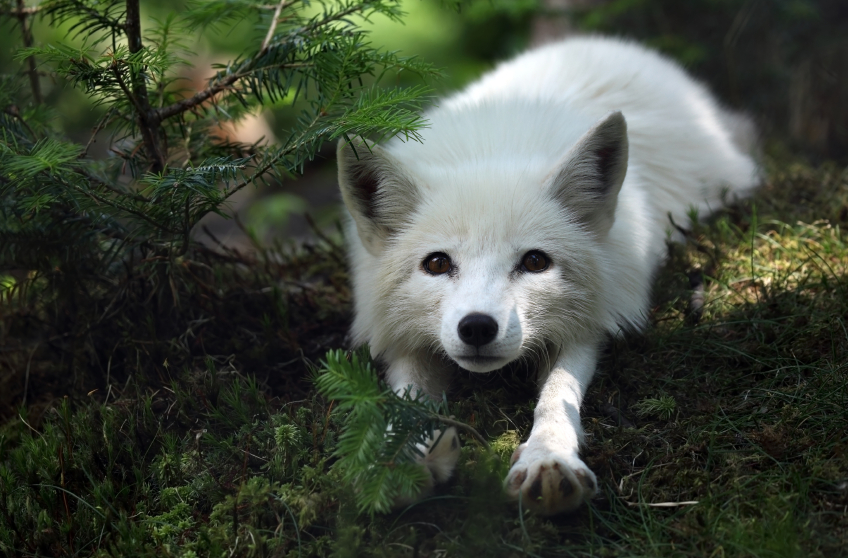Arctic foxes making a comeback in Sweden

More than a decade ago, the fjällräven, or arctic fox, in Scandinavia was on the brink of extinction.
But things seem to be looking up for the species of animals built to endure frigid temperatures, thanks to a resurgence in the creatures the foxes prey on, and also to a joint Norwegian-Swedish feeding program.
The arctic fox doesn’t start to shiver until the temperature gets down to -70 degrees Celsius. They even have fur on the pads of their paws to help with insulation. Their fur changes color from summer to winter to help with camouflage, so they can range from grayish brown to white or blue-gray. They’re such a symbol of nature here that a popular Swedish brand of backpacks and outdoor gear is named after them.
Population numbers surpassing expectations
About 15 years ago, things were not looking good for the Arctic Fox. There were only one or two litters of kits each year in the whole of Sweden. But the furry animals are making a comeback.
In the northwestern region of Jämtland, it’s been a record year, with 37 litters of kits registered thus far.
For Lars Liljemark, a nature observer with the county administrative board there, the arctic fox’s comeback has surpassed expectations.
“This isn’t what one would have thought in the spring or before the population survey, since there aren’t so many small rodents in the mountains here, but we actually have arctic foxes in 29 dens just here in the Helags area, and that’s a lot more than we expected,” he says.
He adds: “we know that there are a lot of voles and lemmings north, in Västerbotten and Norrbotten, but not down here.”
Feeding program
In fact, the arctic fox population is being rejuvenated throughout the whole mountain chain.
In Västerbotten, 21 litters of kits have been observed, and in Norrbotten, where the population survey still hasn’t begun because of summer’s late arrival, it’s also looking promising, says Tom Wiklund, a nature observer in the mountains of Arjeplog.
There, six litters are already known of, with more expected.
Down in Jämtland, the increase in arctic foxes is partly because of a multi-year collaboration between Sweden and Norway to feed them. But the most important of all is lemmings, according to Lars Liljemark.
He says that since 2001, every third year has been rich in lemmings, a popular meal for arctic foxes. But that hasn’t always been the case. Between the mid-80s and 2001, there were no so-called “lemming-years”, and he thinks this is why the arctic fox species declined so much. He says that if that happens again, it’ll probably be tough for arctic foxes to survive, despite the feeding program.
Related stories from around the North:
Canada: Fighting to protect bird habitat in North America’s boreal forest (SLIDESHOW), Eye on the Arctic
Finland: New measures to protect the Saimaa seal in Finland, Yle News
Iceland: Endangered whale meat shipped from Iceland via Halifax, The Canadian Press
Norway: Rapid growth in Svalbard walrus population, Barents Observer
Sweden: Sweden’s mountain hares changing fur color too early, Radio Sweden
United States: Banned pollutants turn up in Alaska fur seals, Alaska Dispatch News



